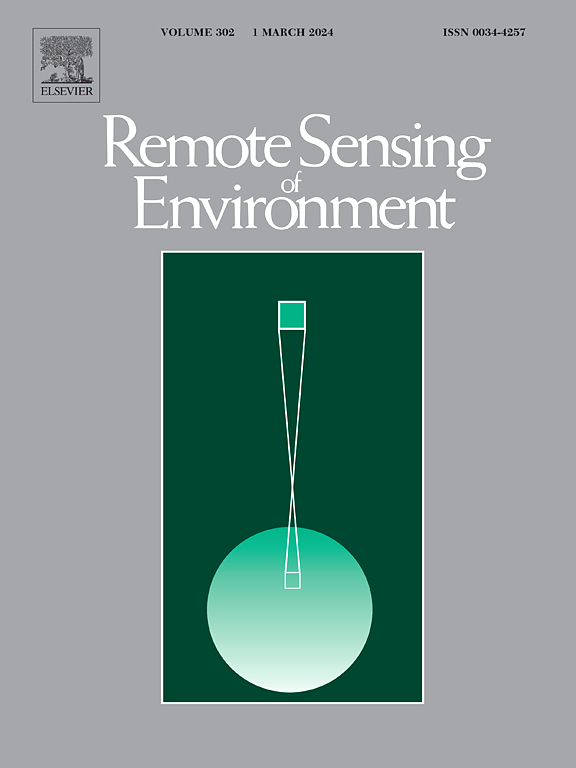Estimating global transpiration from TROPOMI SIF with angular normalization and separation for sunlit and shaded leaves
IF 11.1
1区 地球科学
Q1 ENVIRONMENTAL SCIENCES
引用次数: 0
Abstract
Gross primary productivity (GPP) is more accurately estimated by total canopy solar-induced chlorophyll fluorescence () compared to raw sensor observed SIF signals (). The use of two-leaf strategy, which distinguishes between SIF from sunlit () and shaded () leaves, further improves GPP estimates. However, the two-leaf strategy, along with SIF corrections for bidirectional effects, has not been applied to transpiration (T) estimation. In this study, we used the angular normalization method to correct the bidirectional effects and separate and . Then we developed and driven semi-mechanistic and hybrid models, comparing their T estimates with those from a driven semi-mechanistic model at both site and global scales. All three types of SIF-driven T models integrate canopy conductance () with the Penman-Monteith model, differing in how is derived: from a driven semi-mechanistic equation, a and driven semi-mechanistic equation, and a and driven machine learning model. When evaluated against partitioned T using the underlying water use efficiency method at 72 eddy covariance sites and two global T remote sensing products, a consistent pattern emerged: and driven hybrid model > and driven semi-mechanistic model > driven semi-mechanistic model. The and driven hybrid model demonstrated a notable proficiency under high vapor pressure deficit and low soil water content conditions. The driven semi-mechanistic model tends overestimate T at low T values, and this issue is significantly alleviated by the and driven semi-mechanistic and hybrid models. Our findings demonstrate that correcting the bidirectional effects and using the two-leaf strategy on GPP estimation can improve T estimation and provide a new global T product incorporating vegetation physiological signal.
求助全文
约1分钟内获得全文
求助全文
来源期刊

Remote Sensing of Environment
环境科学-成像科学与照相技术
CiteScore
25.10
自引率
8.90%
发文量
455
审稿时长
53 days
期刊介绍:
Remote Sensing of Environment (RSE) serves the Earth observation community by disseminating results on the theory, science, applications, and technology that contribute to advancing the field of remote sensing. With a thoroughly interdisciplinary approach, RSE encompasses terrestrial, oceanic, and atmospheric sensing.
The journal emphasizes biophysical and quantitative approaches to remote sensing at local to global scales, covering a diverse range of applications and techniques.
RSE serves as a vital platform for the exchange of knowledge and advancements in the dynamic field of remote sensing.
 求助内容:
求助内容: 应助结果提醒方式:
应助结果提醒方式:


